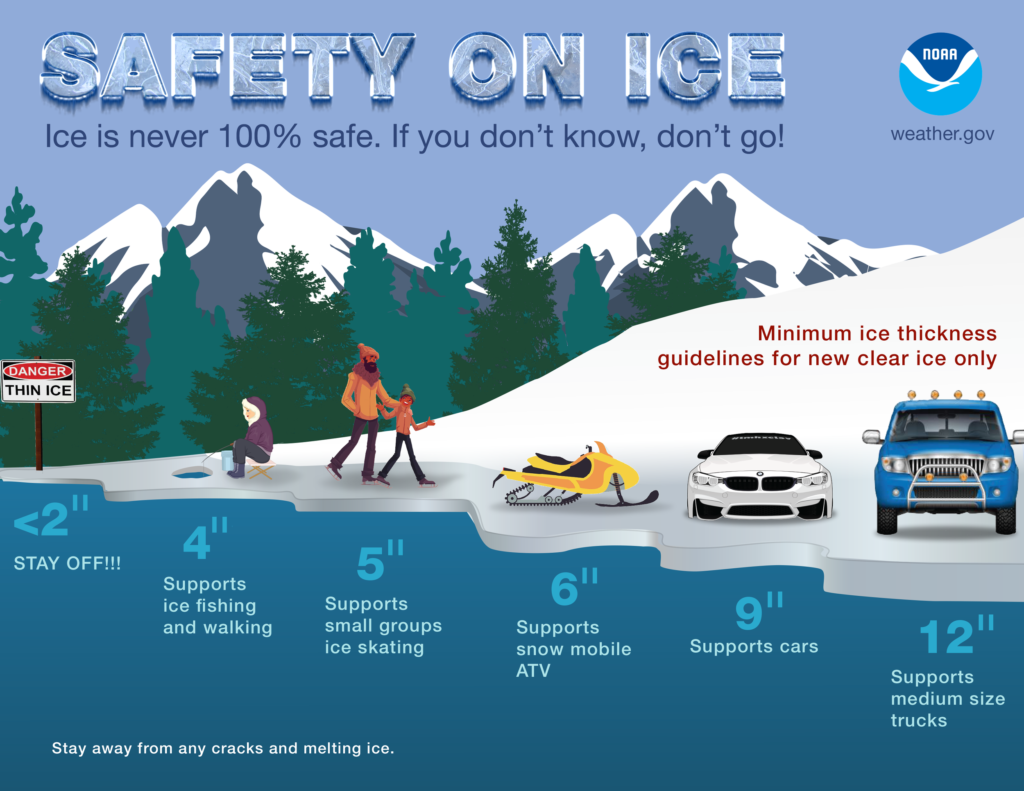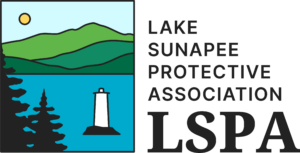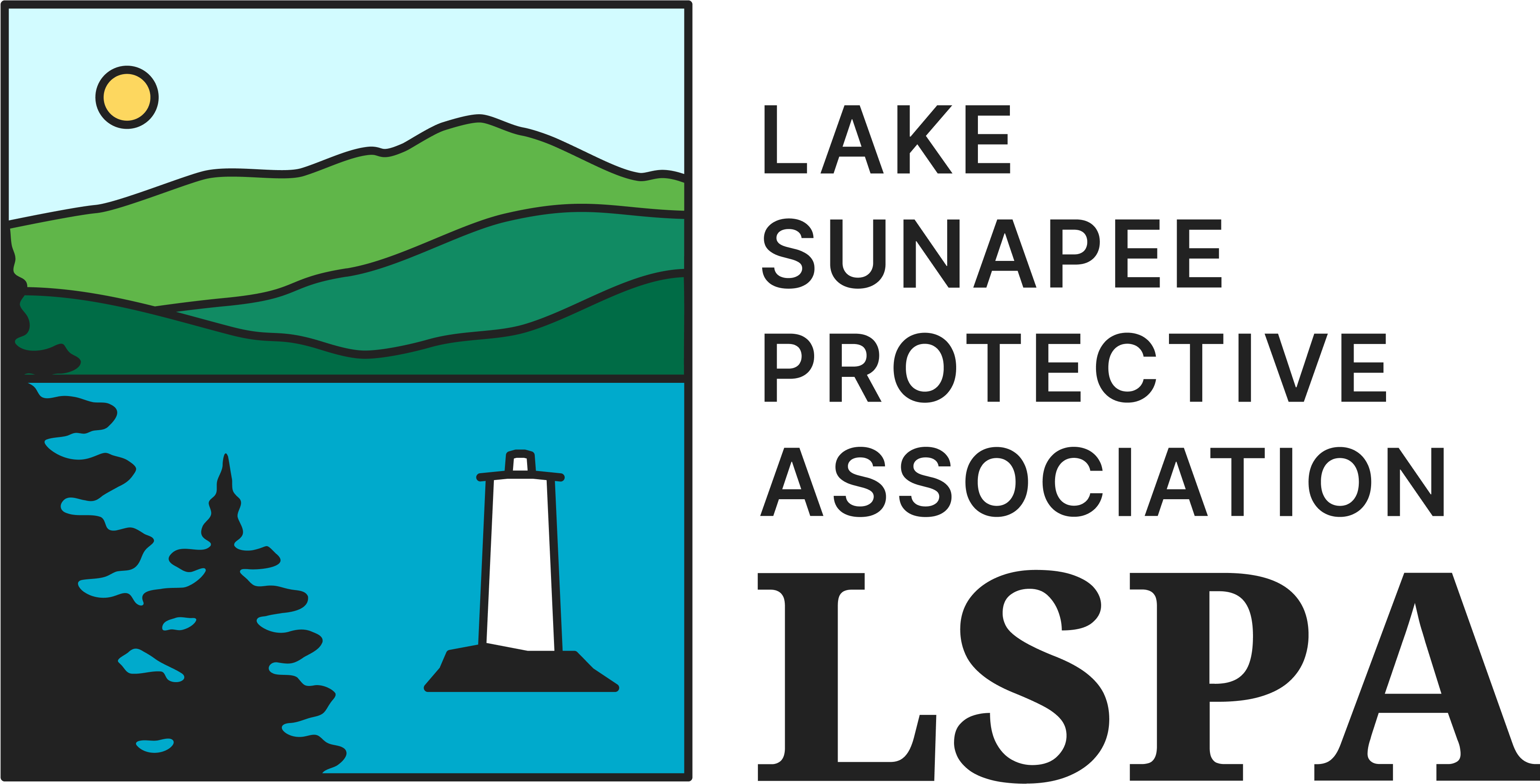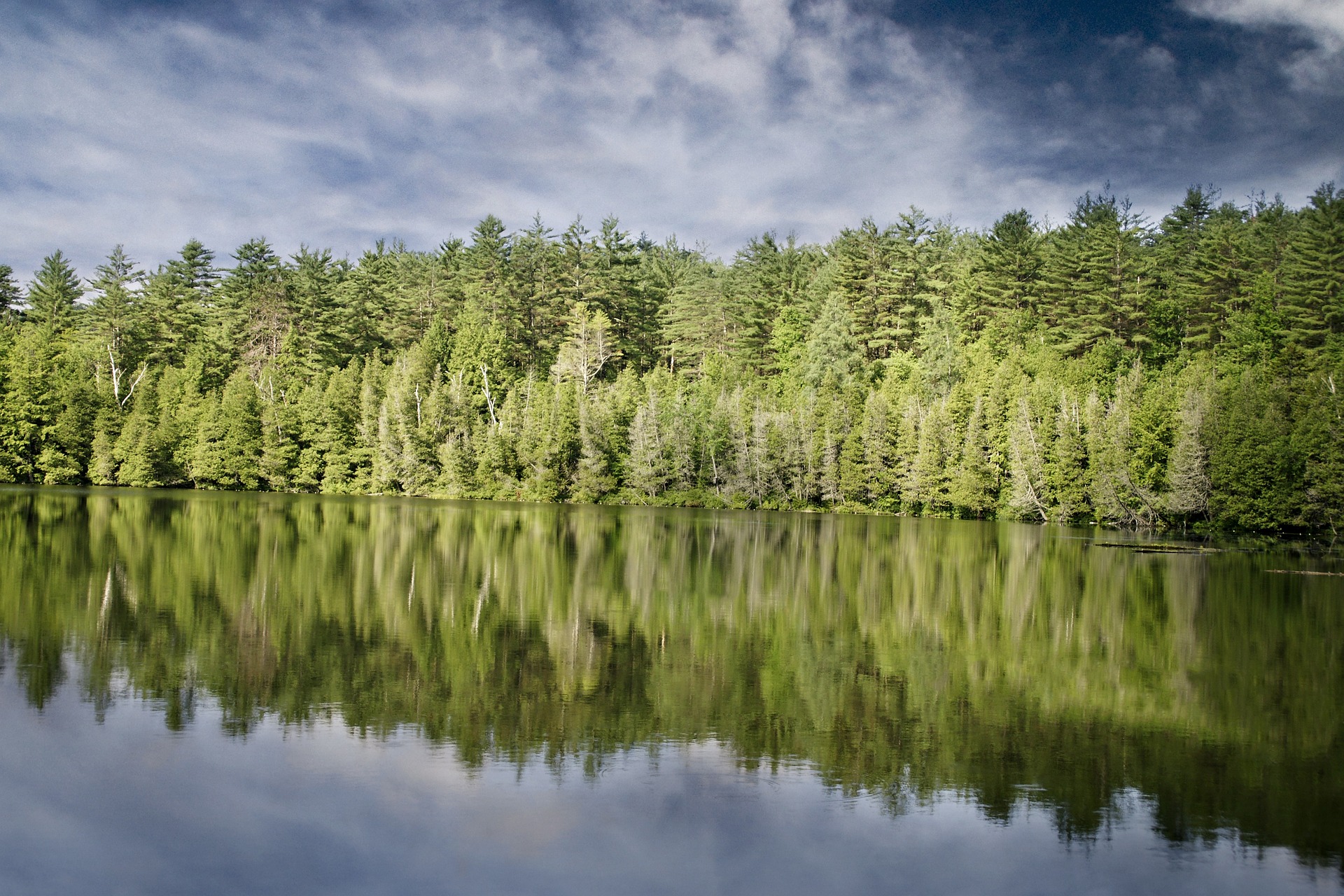Keep in mind that thick ice does not always mean safe ice. It is possible for ice to be thick, but not strong, because of varying weather conditions. Weak ice is formed when warming trends break down ice, then the slushy surface re-freezes. Be especially careful of areas with current, such as inlets, outlets and spring holes, where the ice can be dangerously thin. Also, use great caution in areas with dock de-icers because the ice may be thin and unsafe several hundred feet away from the device.

“Thick and blue, tried and true;
Thin and crispy, way too risky.”
– NH Fish & Game
TIPS FOR STAYING SAFE ON THE ICE INCLUDE:
-
Stay off the ice along the shoreline if it is cracked or squishy. Don’t go on the ice during thaws.
-
Watch out for thin, clear or honeycombed ice. Dark snow and ice may also indicate weak spots.
-
Don’t assume a snowmobile trail is safe just because it exists; ask about trail conditions at local snowmobile clubs or sporting goods shops before you go.
-
Remember that small bodies of water tend to freeze thicker. Rivers and lakes are more prone to wind, currents and wave action that weaken ice.
-
Don’t gather in large groups or drive large vehicles onto the ice. If you do break through the ice, do not panic. Move or swim back to where you fell in, where you know the ice was solid. Lay both arms on the unbroken ice and kick hard. This will help lift your body onto the ice. A set of ice picks can help you pull yourself out if you do fall through the ice; wear them around your neck or put them in an easily accessible pocket. Once out of the water, roll away from the hole until you reach solid ice.





